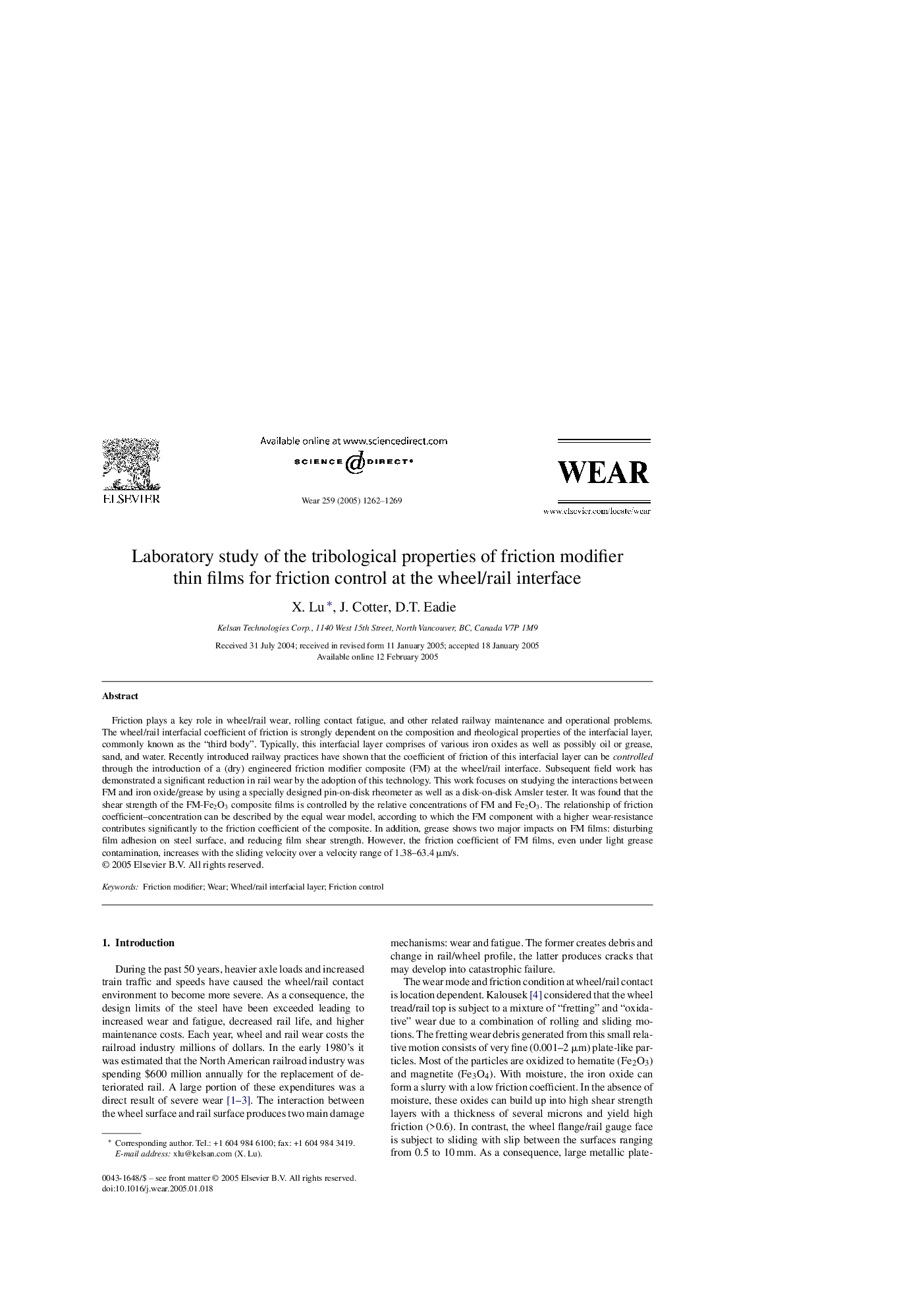| Article ID | Journal | Published Year | Pages | File Type |
|---|---|---|---|---|
| 9679350 | Wear | 2005 | 8 Pages |
Abstract
Friction plays a key role in wheel/rail wear, rolling contact fatigue, and other related railway maintenance and operational problems. The wheel/rail interfacial coefficient of friction is strongly dependent on the composition and rheological properties of the interfacial layer, commonly known as the “third body”. Typically, this interfacial layer comprises of various iron oxides as well as possibly oil or grease, sand, and water. Recently introduced railway practices have shown that the coefficient of friction of this interfacial layer can be controlled through the introduction of a (dry) engineered friction modifier composite (FM) at the wheel/rail interface. Subsequent field work has demonstrated a significant reduction in rail wear by the adoption of this technology. This work focuses on studying the interactions between FM and iron oxide/grease by using a specially designed pin-on-disk rheometer as well as a disk-on-disk Amsler tester. It was found that the shear strength of the FM-Fe2O3 composite films is controlled by the relative concentrations of FM and Fe2O3. The relationship of friction coefficient-concentration can be described by the equal wear model, according to which the FM component with a higher wear-resistance contributes significantly to the friction coefficient of the composite. In addition, grease shows two major impacts on FM films: disturbing film adhesion on steel surface, and reducing film shear strength. However, the friction coefficient of FM films, even under light grease contamination, increases with the sliding velocity over a velocity range of 1.38-63.4 μm/s.
Related Topics
Physical Sciences and Engineering
Chemical Engineering
Colloid and Surface Chemistry
Authors
X. Lu, J. Cotter, D.T. Eadie,
